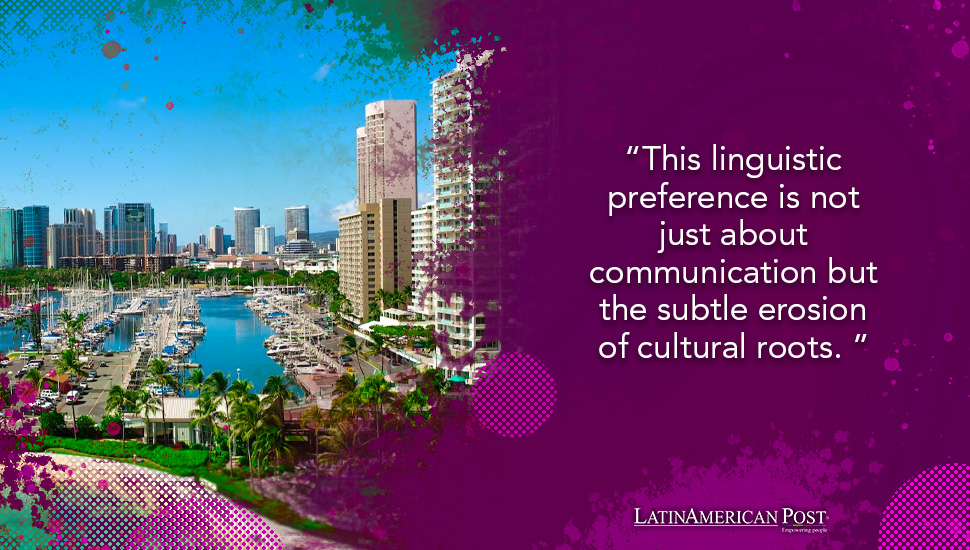Miami’s Language Shift is a Threat to Hispanic Cultural Heritage

A recent Florida International University study reveals Miami’s English language preference, raising concerns about the potential erosion of cultural and linguistic heritage among its Spanish-speaking population.
Shifting Linguistic Landscape in Miami
The vibrant streets of Miami, a melting pot of cultures and languages, are witnessing a subtle yet significant shift in linguistic preferences. A recent study by Florida International University (FIU) highlights that, while Spanish is widely spoken in South Florida, English is increasingly becoming the language of choice among its inhabitants. This seemingly innocuous shift carries with it the potential for profound cultural implications, particularly the loss of cultural roots through language amidst migration.
Led by sociolinguist Phillip Carter of FIU, in collaboration with Salvatore Callesano from the University of Illinois, the study reveals “unconscious tendencies” among Miami’s metropolitan population. These tendencies lean towards English being perceived as the more “important” language. This preference is particularly evident among the younger generation, as Carter notes, “Children tend to choose English over Spanish when given the option to speak either.”
Birth Country Bias
The research, involving over 80 participants, found that 65% showed a “slight” or “moderate” preference for English. In contrast, only 14% exhibited a similar inclination towards Spanish. Intriguingly, the birth country emerged as a “bias predictor.” Those born in the United States naturally leaned towards English. However, being from a Latin American country did not necessarily equate to a preference for Spanish but rather a less strong preference for English.
The study suggests that the longer Latin American immigrants live in Miami, the stronger their automatic preference for English becomes. Carter’s observation that “the longer you are here, the more you internalize a view in which English is dominant and essential” speaks to a deeper, often overlooked, aspect of linguistic assimilation.
Balancing Integration and Cultural Preservation
While it’s undeniable that English predominates in local institutions and is a vital tool for integration, this shift has significant cultural ramifications. Language is intrinsically linked to identity and heritage. As Miami’s residents increasingly lean towards English, there’s a risk that the rich cultural tapestry that Spanish brings may start to unravel.
This linguistic preference is not just about communication but the subtle erosion of cultural roots. For the Latin American diaspora, language is a lifeline to their ancestral heritage. The nuances of Spanish, its idioms, and expressions carry with them histories, traditions, and identities. As English becomes the language of choice, these cultural nuances risk being lost and diluted in the melting pot of assimilation.
Moreover, the preference for English over Spanish among children is particularly concerning. It signals a potential future where the next generation may be disconnected from their cultural heritage. Language is a crucial conduit for transmitting cultural values, traditions, and histories. Suppose Spanish becomes secondary or is lost in the process of linguistic preference. What does it mean for the preservation of Latin American cultures in Miami?
Societal Values and Language
This trend also raises questions about the societal values implicit in language preference. The internalization of English as the dominant and essential language reflects broader societal attitudes about the importance and prestige associated with English. It subtly undermines the status of Spanish and, by extension, the cultural worth of the Hispanic community.
Miami’s linguistic complexity is indeed a reflection of its broader cultural landscape. While Spanish is omnipresent and celebrated in many quarters of the city, the underlying current favoring English reveals a more profound struggle for cultural preservation amidst a globalized world.
Also read: Colombia’s Foreign Minister Stance Against Monopolies Upholds Transparency and Fairness
The findings of the FIU study are a wake-up call. They urge us to reflect on the importance of maintaining linguistic diversity to preserve cultural heritage. As Miami continues to evolve as a multicultural hub, it is crucial to foster an environment where languages, mainly Spanish, that are integral to the identity of a large portion of the population are not just tolerated but valued and preserved. In doing so, we safeguard not just a means of communication but the cultural fibers that weave together the unique tapestry of Miami’s diverse community.





